Cleversulzbach, Germany is a dangerous place if you are the mother of a famous German poet. Two such women lie in the village’s tiny graveyard. Elisabeth Schiller, whose son Friedrich wrote “Ode to Joy,” died in 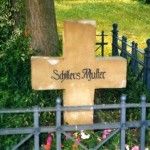 1802 while visiting the village, where her son-in-law was the parish priest. Her gravestone, which just says “Schiller’s mother”, was erected years later by the poet Eduard Mörike, who was the priest from 1834 to 1843. Alas, Mörike’s own mother, Charlotte, also died here in 1841.
1802 while visiting the village, where her son-in-law was the parish priest. Her gravestone, which just says “Schiller’s mother”, was erected years later by the poet Eduard Mörike, who was the priest from 1834 to 1843. Alas, Mörike’s own mother, Charlotte, also died here in 1841.
 If they could somehow come back today, they might be puzzled by the village, particularly on learning that some inhabitants regularly travel miles to practice their trades. Cleversulzbach is becoming part of the commuter belt of the big city of Stuttgart, and many of its streets are lined with recently-built residential buildings. The most lively business practiced in the village itself, it seems, is the antique trade, with several stores dotting the delightful streets. Nonetheless, the village retains much rustic charm, and many of its buildings would be recognized by the two poetic matriarchs – who, incidentally, both died at age 69 and carried the middle name, Dorothea.
If they could somehow come back today, they might be puzzled by the village, particularly on learning that some inhabitants regularly travel miles to practice their trades. Cleversulzbach is becoming part of the commuter belt of the big city of Stuttgart, and many of its streets are lined with recently-built residential buildings. The most lively business practiced in the village itself, it seems, is the antique trade, with several stores dotting the delightful streets. Nonetheless, the village retains much rustic charm, and many of its buildings would be recognized by the two poetic matriarchs – who, incidentally, both died at age 69 and carried the middle name, Dorothea.
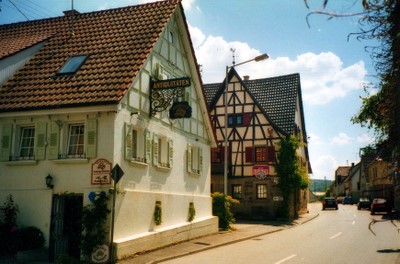 What brings me here is not, or at least not only, a thirst for literary trivia. It is also a wider curiosity about Swabia – southwest Germany – an area that is rich in tradition but is also a hub of modern industry.
What brings me here is not, or at least not only, a thirst for literary trivia. It is also a wider curiosity about Swabia – southwest Germany – an area that is rich in tradition but is also a hub of modern industry.
Mörike’s poems, sometimes mischievous, sometimes melancholy, tell of chattering streams and brooding forests, wood-elves and water-nixies, shepherds, apprentices, village watchmen, and lovelorn maidens at their spinning wheels. But his younger contemporaries, Gottlieb Daimler, Karl Benz and Robert Bosch, exemplified another thing for which Swabia is noted: auto manufacturing. If their technological innovations changed the world, they also made a big impact on their native region, whose factories churn out products bearing their names.
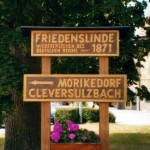 That’s why we’re in Cleversulzbach. Hopefully, by visiting a number of villages where Mörike served as a clergyman (his day job for 17 years while he also wrote poetry) will cast some light on how much his bucolic world has changed since that time, and how much it has stayed the same.
That’s why we’re in Cleversulzbach. Hopefully, by visiting a number of villages where Mörike served as a clergyman (his day job for 17 years while he also wrote poetry) will cast some light on how much his bucolic world has changed since that time, and how much it has stayed the same.
Looking at the enchanting towns of the region, and listening to the soft local accent, one often feels time has stood still. And once you learn that Swabians have always been stereotyped as sober, frugal and diligent, you start seeing evidence for that in the modern tourist experience. Many restaurants insist on a self-service approach, requiring you to go to the counter where you order and pay before you consume; thereby, saving time and money. This is not one of those parts of 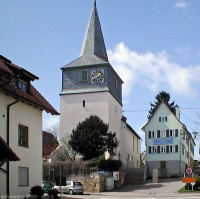 Europe where you can just sit at a table with no idea how long you’ll stay. Swabia values efficiency and is goal-oriented.
Europe where you can just sit at a table with no idea how long you’ll stay. Swabia values efficiency and is goal-oriented.
But, it is that characteristic that explains how Swabia became an industrial center, and now, it is that very development of industry that is slowly changing the region’s character. Huge factories have taken up much of the space surrounding Stuttgart (from which Cleversulzbach is 40 miles north). And large numbers of immigrants from China, the Middle East, and Eastern Europe have arrived to work in those factories.
Our next stop, Moehringen (pop. 30,000), is slightly south of Stuttgart and fully integrated into its industrial sprawl. News stands offer Russian and Romanian newspapers, and several chain restaurants compete with old line eateries offering traditional cusine. There are signs of considerable prosperity, including large, new houses with balconies and nice yards to accomodate weekend barbecues. The centrally located St. Martin’s church, where Mörike was curate for a couple of years starting in 1827, now serves a lively community with club meetings and jazz concerts.
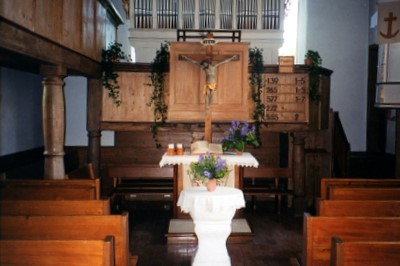 If Moehringen exemplifies modern industrial Swabia, and Cleversulzbach is much further back along that path, it is a different matter when it comes to our third destination: Ochsenwang. No longer a parish in its own right, tiny Ochsenwang was the location of Mörike’s last curate-ship, from 1832 until he landed the Cleversulzbach job.
If Moehringen exemplifies modern industrial Swabia, and Cleversulzbach is much further back along that path, it is a different matter when it comes to our third destination: Ochsenwang. No longer a parish in its own right, tiny Ochsenwang was the location of Mörike’s last curate-ship, from 1832 until he landed the Cleversulzbach job.
Ochsenwang is reached via Kirchheim, a town 18 miles east ofrom Stuttgart. Kirchheim has a McDonald’s, Turkish graffiti, and winding lanes in which practitioners of time-honored crafts are identifiable by little hanging shop-signs. It can be reached from Stuttgart with one of the precisely-timed suburban trains familiar to any visitor to Germany. But, buses from Kirchheim to Ochsenwang chug along country roads, getting stuck behind agricultural vehicles.
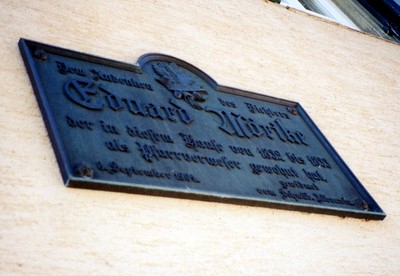 Ochsenwang, it turns out, remains the remote “heron’s nest” that Mörike described in a letter. Its main street, now named after him, is virtually the only drivable thoroughfare. To enter the Mörike museum at number 15, you track down the curator in the village by following directions in the museum’s window. The village’s highlight is the delightful Gothic church. It was built in 1706 and still contains a crucifix from a similar time.
Ochsenwang, it turns out, remains the remote “heron’s nest” that Mörike described in a letter. Its main street, now named after him, is virtually the only drivable thoroughfare. To enter the Mörike museum at number 15, you track down the curator in the village by following directions in the museum’s window. The village’s highlight is the delightful Gothic church. It was built in 1706 and still contains a crucifix from a similar time.
Ochsenwang has three restaurant/hotels where you can sit among stuffed animals and eat local specialties. Try Maultaschen:, large ravioli-like pasta pockets stuffed with minced meat and vegetables, or have a bowl of bone marrow soup. Wash it all down with a generous mug of beer, and if you squint through the window, you may just see a water-nixie skipping down the lane.


Comments